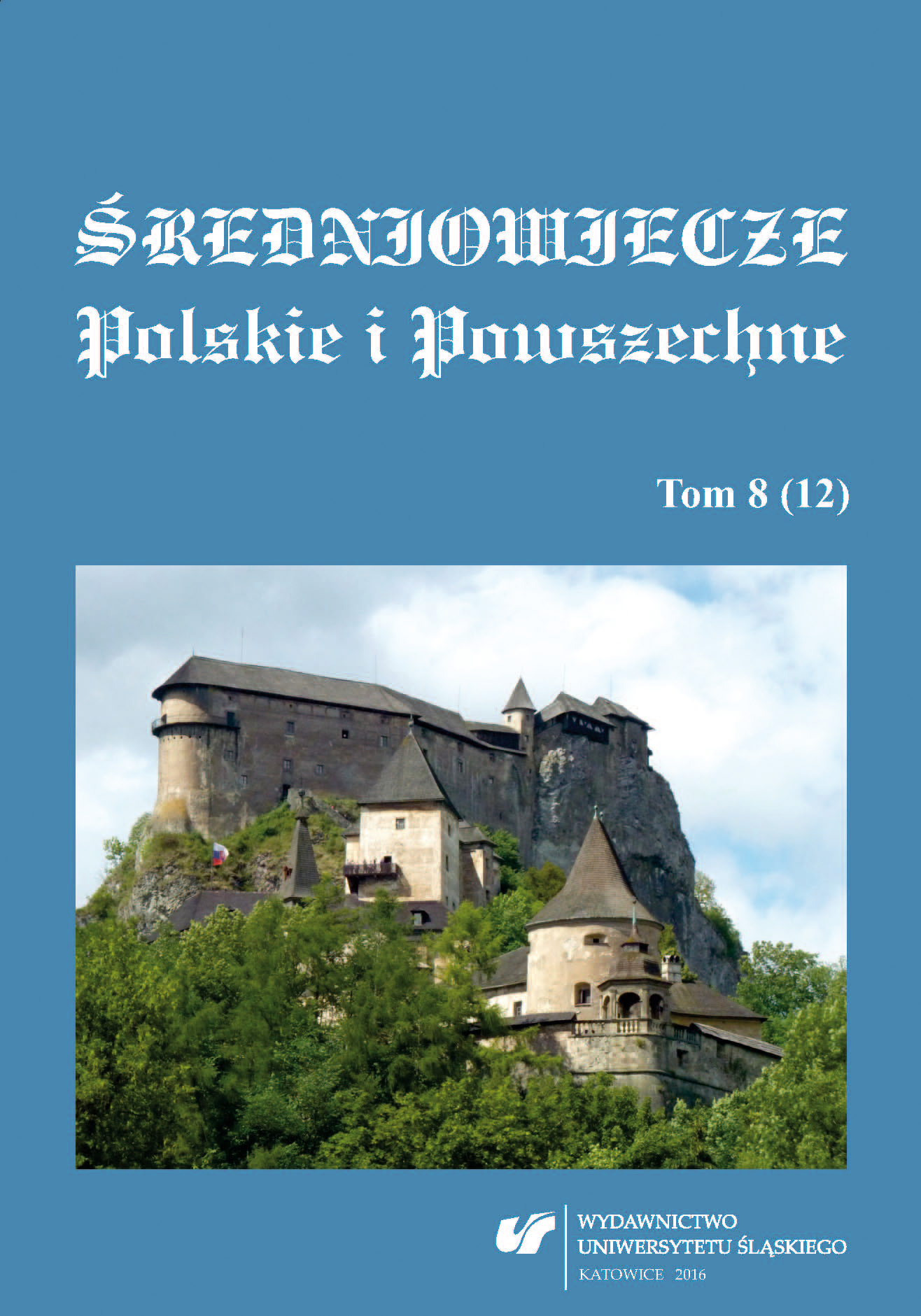Nowe spojrzenie na początki Będzina. Przyczynek do polityki miejskiej Kazimierza Wielkiego
A New Look at the Foundation of Będzin. A Study of the Urban Policy of Casimir the Great
Author(s): Karol NabiałekSubject(s): History, Local History / Microhistory, Political history, Middle Ages
Published by: Wydawnictwo Uniwersytetu Śląskiego
Summary/Abstract: The article proposes a new, distinct perspective on the early history of Będzin which differs significantly from the earlier approaches. The starting point for the following study is the record of the name of a neighboring village of Będzin, Małobądz, which can be translated to Little Będzin or Old Będzin. It is, therefore, possible to assume that the land on both banks of river Czarna Przemsza constituted, in fact, one settlement. Thus, the name “Będzin” encompassed that entire territory. According to the proposed hypothesis, the initial settlement was established on the right bank of river Czarna Przemsza, on the land belonging to the Duchy of Opole and Racibórz. That first village, named Będzin (later: Małobądz), was initially mentioned in official documents in the year 1301, and in the 13th century, it received a charter (settlement with German law). Moreover, the first mentions of a church built in that area date back to 1308, and the chapel of St. Dorothy, located in Małobądz and mentioned by the official documents in 1522, could constitute one of the remnants of the first church in Będzin. The article dates the first settlement on the left bank of river Czarna Przemsza back to the first half of the 14th century. Initially, there was a castle built in the place of the early medieval wooden castle, likely due to the efforts of Vladislaus the Elbow-high, and it was later remodeled and expanded under Casimir the Great. In addition, due to the efforts of Casimir the Great, a city was settled in the vicinity of the castle (exactly: under the castle, Latin: sub castro) prior to 1358, located on unoccupied land and designed to compete economically with the settlements on the right bank of Czarna Przemsza, particularly the town of Czeladź. This decision of Casimir the Great can be, in turn, interpreted as a compensation for the terms of the Treaty of Namslau in 1348, which dispelled any remaining hope of returning Silesia to the Kingdom of Poland.
Journal: Średniowiecze Polskie i Powszechne
- Issue Year: 2016
- Issue No: 12
- Page Range: 196-215
- Page Count: 20
- Language: Polish

